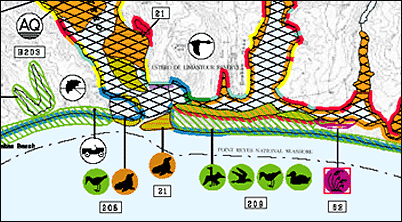THE THREE GORGES DAM IN CHINA AND ITS IMPACTS ON THE ENVIRONMENT AND COMMUNITIES.
In 2006, the Chinese government completed a decades-long construction on the world’s largest dam ever situated in Central China. The Three Gorges Dam is 1.4 miles Long and 604' tall, over 5 times as large as the Hoover Dam. The three Gorges Dam is fed by the Yangtze River and its 26 turbines provide 18,000 megawatts of power.
Environmental Effects of the Three Gorges Dam
The most immediate environmental effects of the Three Gorges Dam have been an increase in landslide activity. This results primarily from erosion caused by the drastic increases and decreases in reservoir water levels, which, when at their peak, create a body of water almost as long as Britain. Another major issue with the Dam is the ways in which it is affecting biodiversity in the area. Animal and plant life has been greatly threatened due to flooding in some habitats and water diversion in others. Fragmentation of habitat may lead to heavy losses of biological diversity. Fragmentation of habitat, moreover, is disturbing the reproduction patterns of many species. Fragmentation leads to species insularization by creating virtual islands, which confound processes of ecosystem stability and biological enrichment. A number of species will be adversely affected by the construction of the dam. There are 300 species of fish in the Yangtze River. The dam will create a barrier in the river that these species will not be able to cross. Fish will not be able to travel upstream to spawn, so the populations of the species will decrease. Decreases in freshwater flow have meant that more saltwater is creeping up the Yangtze, endangering fish populations already threatened by overfishing. This again signifies a loss of valuable resources. the Dam may have been tied to major earthquakes, including the one in May of 2008 which killed 87,000 people by placing tremendous pressure and fluctuation (by rapidly raising and dropping water volume) on the underlying geological plates, TGD arguably increases seismic activity this leads to increased earthquakes, however, is more difficult. Still, there are already detectable increases in seismic activity. Towns and forests located in areas that will be inundated will have to be demolished and removed in order to increase navigability on the river. The loss of forests and agricultural lands will lead to erosion and the buildup of sediment at the base of the river and reservoir. This could lead to increased flooding upstream. Sediments and silt contain valuable nutrients necessary to agricultural production. The blocking of sediments behind the dam means that these nutrients may not reach fertile farmland downstream of the dam. This could reduce the fertility of the land. Other consequences of the Three Gorges Dam are lower temperature and dissolved oxygen content in water down-gradient from the dam. Dissolved oxygen is necessary for healthy aerobic activity in aquatic ecosystems. Fish and plants depend on oxygen to survive. The presence of the dam will disrupt the natural processes of aeration (the movement of water) and diffusion, ways oxygen dissolves into water. Water will move more slowly downstream, thus making it more difficult for available oxygen to be present in the water. This could have a negative impact on the aquatic ecosystem downstream.
Social Effects of the Three Gorges Dam in China
The most important effect that the construction of the Three Gorges Dam has had on Chinese society has been the displacement of millions of people from the Yangtze River region. In order to establish the reservoir, hundreds (possible thousands) of towns and villages were evacuated and later submerged.
References
Lin Yang (12 October 2007). "China's Three Gorges Dam Under Fire". Time. http://www.time.com/time/world/article/0,8599,1671000,00.html. Retrieved 2012 -06-02 William C. Jones; Marsha Freeman. "Three Gorges Dam: The TVA on The Yangtze River". Schiller Institute. http://www.schillerinstitute.org/economy/phys_econ/phys_econ_3_gorges.html. Retrieved 2012-05-01.
